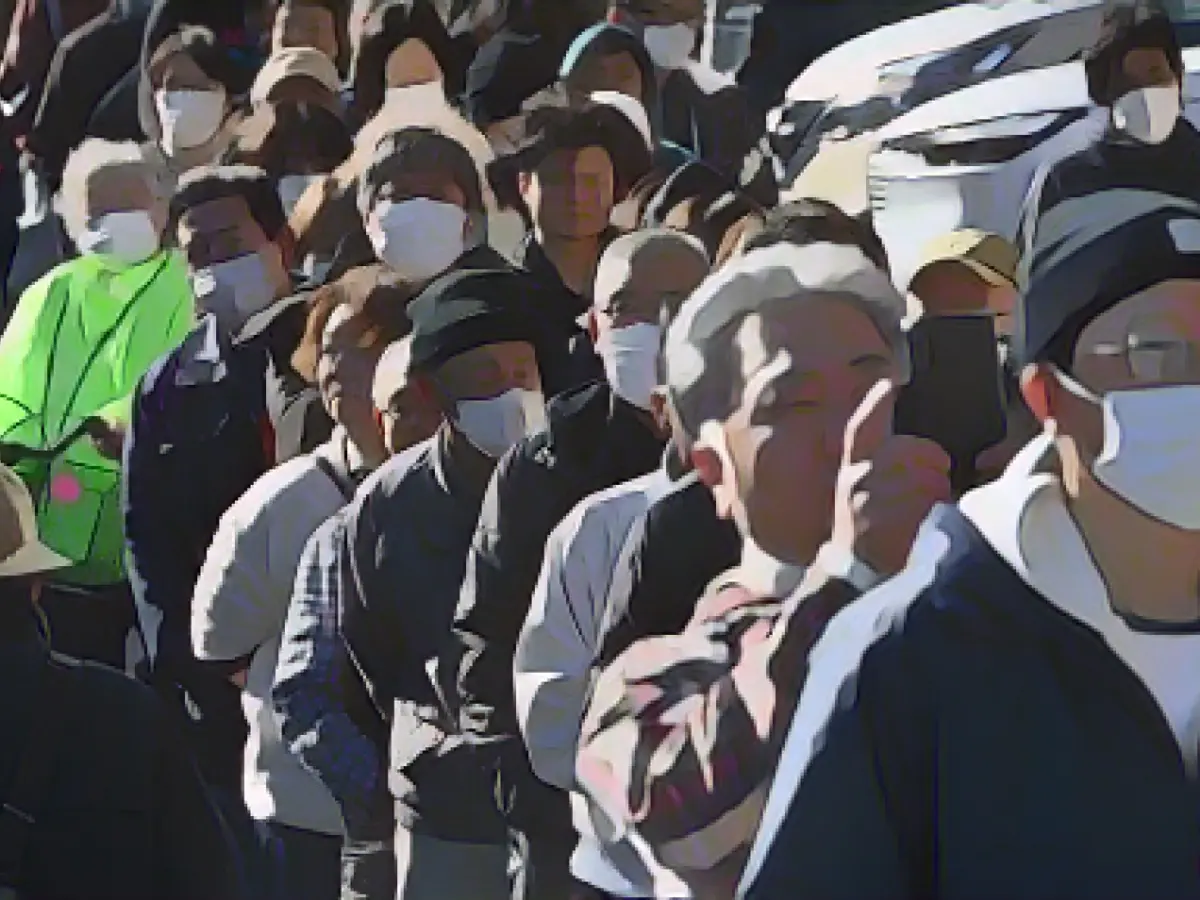Ishikawa Prefecture - Japan mourns dozens of deaths after earthquake
The series of severe earth tremors on the west coast of Japan has killed at least 48 people and caused considerable destruction. At least 137 people suffered injuries on New Year's Day as a result of the first particularly violent quake with a magnitude of 7.6 in the Noto peninsula area, as the Mainichi Shimbun newspaper reported on Tuesday. "The search and rescue of people affected by the quake is a battle against time," said Prime Minister Fumio Kishida to the crisis committee. The national meteorological authority lifted a tsunami warning issued the previous day for Japan's entire west coast on Tuesday.
The strong quake struck shortly before nightfall and was followed by dozens more. Tidal waves of around one meter in height hit the coast. At dawn on Tuesday, thick layers of brown mud lay on the roads in some places. Since then, further tremors have shaken the region, while rescue operations have been further hampered by considerable damage. Numerous houses were destroyed or fell victim to fires. Roads were torn open or partially blocked by landslides and trees fell.
Earthquake in Japan triggers major fire
In the hard-hit town of Wajima in Ishikawa Prefecture alone, more than 200 homes and businesses burned down. "I was very scared, I screamed. I thought I was going to die," Australian tourist Kumudu Thuyakontha told "The Sydney Morning Herald" newspaper. She had just visited one of the famous traditional onsen baths in Kanazawa Prefecture, a popular tourist destination, when the building began to sway. The Australian was lucky. She and her family were unharmed and took the first available train to Kyoto to escape the region after the shaking subsided.
Others were less fortunate. "At first I thought the quake was of the usual magnitude," one Ishikawa resident told the Asahi Shimbun newspaper. "But soon after, there was a vertical quake and the house collapsed." His 79-year-old mother, who was in another room, was almost buried under the house, but was able to shout "Get out!" and save herself in time. They spent the night in a tent on a hill and then moved to an emergency shelter, the 50-year-old told the newspaper.
Japan sends aid workers
Around 100,000 people were urged to seek safety during the New Year celebrations. Tens of thousands of people in the prefectures and Toyama had to stay in emergency shelters. Tens of thousands of households lost power in the wintry temperatures and water pipes burst.
Thousands of members of the army, firefighters and police officers from all over the country were sent to the disaster region on the relatively remote Noto peninsula. Japan's Emperor Naruhito and his family canceled their traditional New Year's appearance before the people on Tuesday. They were inconsolable and hoped that efforts to save human lives would progress as quickly as possible, the media quoted the Imperial Household Agency as saying.
More earthquakes expected
The emperor and members of his family greet tens of thousands of subjects for the New Year behind glass panes at the Chowa Den Palace, which normally takes place on January 2. It is one of the rare opportunities for the people to get so close to the palace. While initial clean-up work began, the tremors continued. The national weather authority warned of further strong tremors for the rest of the week, especially this Wednesday.
In March 2011, a magnitude 9 quake triggered a massive tsunami that devastated large areas in the north-east of the country and killed around 20,000 people. A meltdown occurred at the Fukushima Daiichi nuclear power plant. The Far Eastern island kingdom of Japan is one of the countries in the world most at risk from earthquakes.
Read also:
- Floods: water levels remain critical in many places
- Snow chaos further restricts Bavaria
- Continuous operation in the flood areas
- Flood situation remains tense in many places
- The number of confirmed deaths from the earthquake in Japan has reached 48, with many more reported as missing.
- Despite the operational force of tens of thousands of rescue personnel, the search for survivors among the dead and missing is a daunting task.
- The west coast of Japan, particularly the Noto peninsula, has been heavily impacted by the earthquake, with houses and businesses destroyed and roads torn open by landslides.
- In Wajima, a town in Ishikawa Prefecture, over 200 homes and businesses were engulfed in flames following the earthquake.
- With Prime Minister Fumio Kishida expressing his hope for a quick turnaround, Japan is hopeful that they can enter the year 2023 on a happier note, following the tragedy.
- In the aftermath of the earthquake, experts have warned of further potential earthquakes and tsunamis along the Japanese coastline, raising concerns for the safety of the population in the region.
Source: www.stern.de






